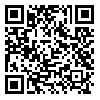1- Ph.D student in Geography and Urban Planning, Tarbiat Modares University, Tehran, Iran
2- Associate Professor of Geography and Urban Planning, Tarbiat Modares University of Tehran, Iran. ,SAFARRAHMATI@YAHOO.COM
3- Associate Professor of Geography and Urban Planning, Tarbiat Modares University of Tehran, Iran.
2- Associate Professor of Geography and Urban Planning, Tarbiat Modares University of Tehran, Iran. ,
3- Associate Professor of Geography and Urban Planning, Tarbiat Modares University of Tehran, Iran.
Abstract: (15 Views)
Throughout history, urban planners have attempted to achieve sustainability, development, and improvement of the urban environment by employing a range of urban design strategies and theories. However, many of these strategies have faced limitations due to their time-consuming nature and heavy economic costs. In the meantime, “urban acupuncture” is proposed as a new and efficient solution for restoring worn-out textures and improving the urban fabric. Inspired by the body treatment model in acupuncture, this approach targets strategic urban points through low-cost, focused, and micro-scale interventions. Such interventions restore the flow of energy and life to the urban fabric by stimulating social dynamics and responding to local needs. In other words, urban revitalization is possible not through extensive changes, but by gradually treating its vital components at key points. The purpose of this article is to examine the place of the urban acupuncture strategy in contemporary planning and analyze the mechanisms of its impact on the rapid regeneration of urban spaces. The research method is based on: 1) Explaining the concept of urban acupuncture and its theoretical background by reviewing the opinions of experts in this field. 2) Extracting key principles and implementation methods of this strategy in urban environments. 3) Presenting case studies of successful projects in different cities that demonstrate the impact of this strategy in revitalizing textures. The findings indicate that this strategy, relying on its flexible and scalable nature, has the ability to adapt and generalize to various urban contexts.
Article Type: Original Research |
Subject:
civil planning
Received: 2025/04/29 | Accepted: 2025/08/3
Received: 2025/04/29 | Accepted: 2025/08/3
Send email to the article author
| Rights and permissions | |
 |
This work is licensed under a Creative Commons Attribution-NonCommercial 4.0 International License. |







